I Used My Emergency Fund On Mt. Rainier
We had spent a good half hour on the summit of Mt. Rainier, the sentinel of the Pacific Northwest. At 14,411 feet high it soars majestically over Seattle and the Cascade mountains, a permanently glaciated chunk of volcanic rock that dominates the landscape.
After high fives and pics galore our hands and feet started getting numb so we began our descent, the most dangerous part of any big mountain climb. Not long afterwards I heard the climber in front of me yell “falling!!” and couldn’t believe what was happening.
It was time to use my emergency fund.
The Emergency Fund
What is an emergency fund? Investopedia defines it thusly:
The term “emergency fund” refers to money stashed away that people can use in times of financial distress. The purpose of an emergency fund is to improve financial security by creating a safety net that can be used to meet unanticipated expenses, such as an illness or major home repairs.
So an emergency fund exists to pay for or cover unexpected expenses or events. Those expenses could be home or vehicle repairs, and those events could be a job loss or a pandemic.
Emergency funds are like the fire extinguisher behind glass in a building corridor. We hope we never have to use it, but we know why it’s there. And we’re glad it’s there.
Safety Net For The Unanticipated
Two key words in the emergency fund definition above are “safety” and “unanticipated”. In the world of mountaineering, climbers strive to create as much safety as they can in a dangerous environment.
Mountains have objective hazards such as rockfall and avalanches that cannot be stopped by man. But proper training and knowledge can reduce their risk.
Then there are subjective hazards, which can be controlled by man. Examples are failing to place protection correctly or simply stumbling and falling.
One of the fundamental skills all mountaineers must learn is self arrest, which is the technique of stopping an uncontrolled slide down a snow or ice-covered slope using an ice axe, boots, and body positioning.
Here’s an example of a climber self arresting in a real scenario.
The Real Deal
It all happened very quickly. As I saw my teammate falling I immediately dropped to the snow and dug my boots and ice axe in as deep as I could, waiting for the full force of a human body to yank on me when the slack in the rope ran out.
When that pull came it was very strong, but my anchor held. I stopped my partners fall.
The slope he fell on was steep and massive, and he (we) would have slid for a long time. It could have possibly had glacial crevasses on it, meaning a plunge into the depths of a glacier and likely severe injury or death.
I was so fortunate to have seen and heard his fall very quickly, and to be practiced at self-arrest. If I wasn’t it could have been very bad.
The Mountaineering Emergency Fund
Knowing how to self arrest and being proficient at it is the equivalent of an emergency fund for mountaineering. It’s the fire extinguisher behind the glass. You hope you don’t have to use it, but if and when you do, it can be a real life saver.
As for my real emergency fund, the one that has money in it, I’ve never had to use it and hope I never do. I don’t like unanticipated events that cost lots of money. But I’m also not stupid, and I know that life is complex and there will likely be a time when it’s needed.
If something sits around for years not being used it’s tempting to want to get rid of it, like an extra pen in a junk drawer. So ditching the emergency fund and putting it in Dogecoin might seem tempting if it’s been languishing untouched for over a decade.
Similarly, if I said “why run self arrest drills again this winter, I’ve never had to use them in a real scenario”, my skills would atrophy and go away. Then when the real scenario does happen – as it did on the upper slopes of Mt. Rainier that day – I’d be screwed.
So keep your emergency fund, even if it’s never been used. And if you’re a mountaineer you better damn well know how to self arrest.
I’d be leaving you hanging if I did a post about climbing Mt. Rainier without including some pics.

The sentinel

Gorgeous early morning climbing above the clouds

Glacial crevasses are a danger because they’re sometimes covered by a thin snow bridge.

On the higher slopes you can see Mt. Adams above the clouds in the upper right

Your humble blogger on the summit, holding the tool he would unknowingly use to self arrest about an hour later





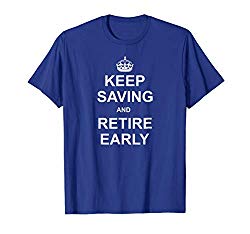
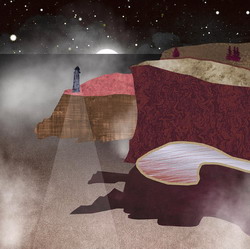

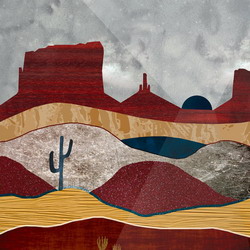
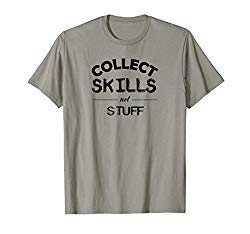
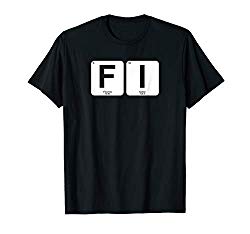

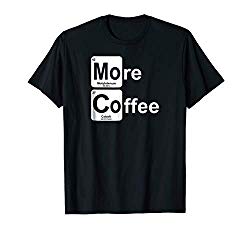

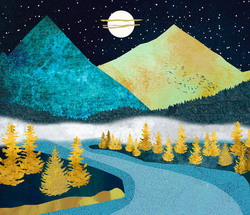

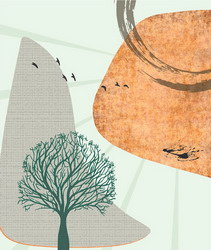










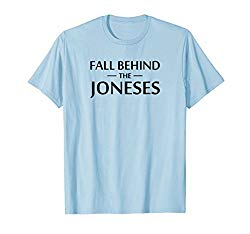


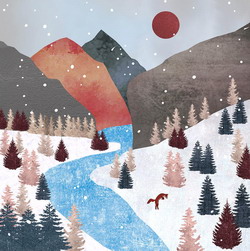
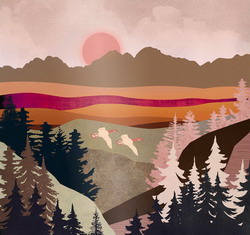










Amazing story Dave. Glad you were prepared and things turned out okay. I’m sure it took some time before your heart rate came back down.
Oh yeah it did. It was an unexpected event that I’m just glad turned out to be a mostly non-event.
Love the analogy and so glad you and your partners turned out okay. A great example of how being prepared can literally save your life. Whether it’s from bankruptcy or an uncontrollable fall, proper practice and preparation can prevent disasters like what you described.
Happy it was only an exciting story and a good lesson and nothing more!
Believe me I was too. Preparation is everything, especially in the mountains.
Talk about an adrenaline surge! You don’t want to be in a situation like that but when you are and you react the way you trained its quite a feeling afterwards. I only did CPR once, when a lethal gas release at the chemical plant I worked at felled six co-workers near me. I was able to get to one of the guys in spite of the gas cloud and perform CPR and brought him back from clinical death. Fortunately we were all trained and there were just enough of us there to save all six. As far as I know five are still alive over thirty years later (one died of cancer a few years ago). I consider that the single most meaningful thing I accomplished at work, saving a life. But it only happened because we trained for it before it happened. I also fell right at the top of a fourteener in Colorado just as we started down. It was summer and it was not a technical climb, just a brutal hike. So it was nothing like your experience but it sure reminded me of it. I slipped on some lose gravel and my knee hyper extended. I thought I’d end up having to call for a helicopter at first but it turned out just to be a sprain and I limped my way back for the five miles with my wife and we got out just as it started to get dark. Needless to say this post brought both of those events back to mind. We always had a healthy emergency fund and also never had to use it. But that’s the best kind of insurance and the best kind of emergency training, the kind you never use. You are a real live hero Dave! Just think of what would have happened if you didn’t act decisively in an instant. That single action has ramifications that will echo through decades to come. I still see the guy I performed CPR on around town so many years later, happy and healthy with a family that loves him, it is a powerful thing to have been a part of.
Holy schmoly Steve, you’re a real life saver! I would freak out if I had to do CPR on someone. In my case I made a split second decision to quickly get in self-arrest position and make an anchor, but it was all over in maybe 5 or 6 seconds. Having to maintain composure and do CPR for what could amount to minutes must be hair-raising and traumatic. Great job dude, and very cool that you still see the guy you saved!
Thanks, but you did the same thing I did. Which was to make a split second decision and then to fall back on your training. Its the decision that has to be made in an instant that matters, the follow through can’t happen without that instant bias towards action. People can flee, freeze or fight in a crisis. You chose to fight, that makes you that guy.
Fortunately I’ve only lost my footing on step iced snow slopes a few times but maintained enough points of contacts to stop quickly. I do have one incident where my climbing partner tripped on his crampons, the usual culprit during snow travel, and slide down the mountain. The problem was it was late spring and the snow melted enough away to the permanent snow/ice and he couldn’t self arrest. Slid right off a cliff and thankfully got hung up 20 feet below on a lip of snow that saved him. We still needed to provide first aid and then use my other friends SPOT to get the search and rescue heli. It meant a lot to me to get him back up that mountain safely a few years later and finally stand on the summit. Thanks for sharing your story on Rainer. I’ve done Mt Baker as a insane day trip from the island with a few friends but not Rainer yet.
Soft snow is deadly because as you know it’s virtually impossible to self-arrest on reliably. I took a short/minor fall on Mt. Shasta on soft snow and while I was able to slow my slide I wasn’t exactly stopping. I eventually hit a small snowbank and wasn’t going very fast, but it still taught me the dangers of soft snow. Now when I have those conditions where self arrest might not be possible I consider a rolling belay using a snow picket. Sounds like your friend got super lucky at the lip of that cliff, wow, a close call indeed.
you remind me of yukon cornelius with that snow axe on the summit. well done on being prepared for the unlikely event that happened. you just never know if guess. i don’t think we ever used our emergency fund in the past 15 years either. it seemed much more important when we were younger and the money pie was much smaller but we still keep it in cash.
Yukon! I love that guy, slaying the big snow monster. I’m gonna make a point to watch that cartoon this Christmas, I miss it!
It’s better to have it and not need it, right? I think the emergency fund is a lot more crucial when you’re poor.
There are always some issues popping up. For people with stable finance, they can deal with it because they have income and investment. Poor people would have to borrow money to fix any problem. It’s tough.
Very true Joe, it must suck having to borrow money to deal with any small problem. Some people are in that position through no fault of their own, but others who make plenty good money put themselves in that position through poor money decisions.
You’re on fire (pun intended) with the analogies lately. Great post and absolutely amazing pictures. Looks like a fun hike. That said, I’ll wait til Summer and not get near the snow.
You’ve got me singing the Van Halen song “On Fire”, Roth goes nuts on that one! And don’t judge snow poorly without giving it a chance 🙂
I had a colleague do the same climb but without incident. He also described the need to practice self arrest and said it can be nerve wracking to place your life in the trust of fellow climbers you don’t really know. He said the scariest part was crossing crevasses after placing ladders to bridge the gaps.
Not to nit pick, but I view self arrest as being more akin to having insurance vs emergency money myself. The amount paid (e.g. practice time) compared to payout when used seems more proportional IMO.
That’s a great take on it Phillip, I think it could be looked at as insurance as well. In a general sense an emergency fund could be called the same. Thanks for the great comment!
I always loved the story of Pete Schoening’s belay on K2. He saved 6 with an ice axe belay wedged behind a boulder. Years later 28 descendants of those men got together to honor what he accomplished. Now you can find information about it by searching “the belay.” I used to practice self arrest on Mt. Elinor in the Olympics. The chute near the summit is a perfect (safe) spot to try all the different body positions when falling.
Ah, another mountaineering fan! Yes Schoening’s belay is one of the biggest in mountaineering lore. I have quite a huge library of climbing books and it’s mentioned in many of them. As for the Olympics, I have sadly not climbed there yet. It’s on my list and I’d like to do Olympus one day, it’s such a unique and gorgeous place!
Great analogy, and story Dave! Was this a recent climb?
Glad you had that “emergency fund” and didn’t bite the big one!
The climb was back around 2011 I think, I’m still busy writing about my vast archive of life stories 🙂
OMG what a crazy story. And beautiful photos. Very well done.
Thank you!
Great story and reminder, some beautiful shots of the mountain too! Just listened to a great podcast on the Reinier Infinity Loop, inspiring stuff (and out of my wheelhouse) but makes me stoked to get down to the mountain and the wonderland trail.
I’ve read about some folks doing the infinity loop, pretty damn awesome. Doing the Wonderland Trail is high on my bucket list, I’ll get it done one day, thanks for stopping by!
I always love how you write these stories Dave. And glad this one ended well! I live on a polar plateau so not much sliding but I can imagine the split second terror…
Thanks Andrea, yes it was a very short duration of terror followed by lots and lots of relief!
Here I though you spent all your emergency cash on a wild helicopter trip to the top of Mt. Rainier! Not so much!
Great story though!
Haha, you should know me well enough to know that I’d never do that! Human power is the best – thanks for reading Tako!